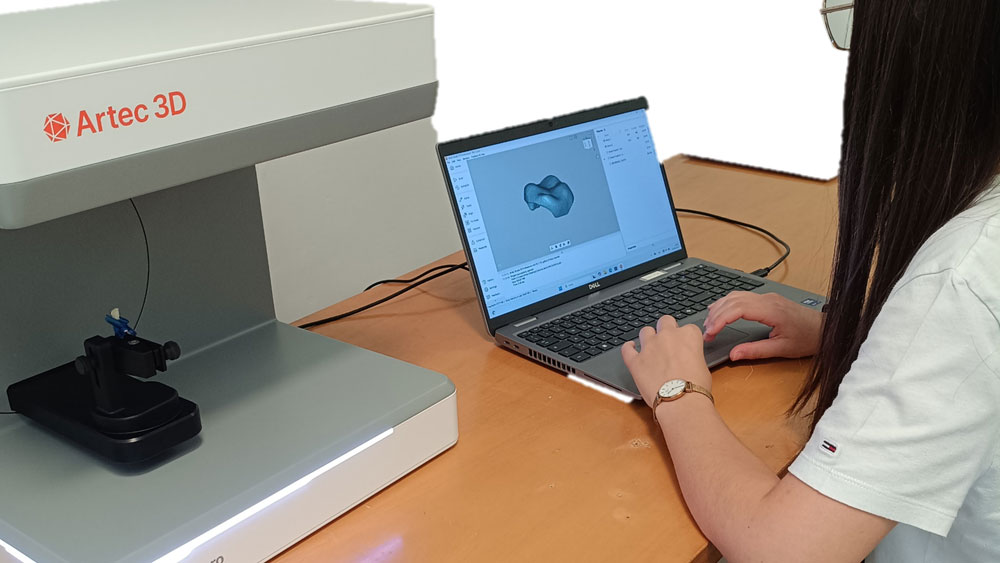University of Perugia
A student at the University of Perugia 3D scanning an implant with Artec Micro II.
The dental industry is seeing a surge in 3D printing, with the technology enabling a growing number of dentists to rapidly create custom implants in clinics around the world.
|
ADVERTISEMENT |
When it comes to customizing implants like dental crowns, bridges, guides, and aligners, 3D printing is faster, more accurate, and (in the longer term) less expensive than traditional impression-making. But there are drawbacks, especially around material compatibility.
3D printing materials must not only be qualified to work with certain technologies but also tested for durability, aesthetics, shrinkage, and human safety. At the moment, these issues limit variety and make older, tried and tested methods attractive to experienced dentists.
Getting new resins into the hands of these dentists requires a great deal of research. Often this centers on geometric accuracy analysis. But print size and speed can also be serious challenges here. So, how do you rapidly, repeatedly digitize and test tiny 3D-printed implants?
Challenge: Measuring 3D-printed crowns with sufficient accuracy for comparative analysis and to determine if they outperform those made with conventional dental materials.
…

Add new comment